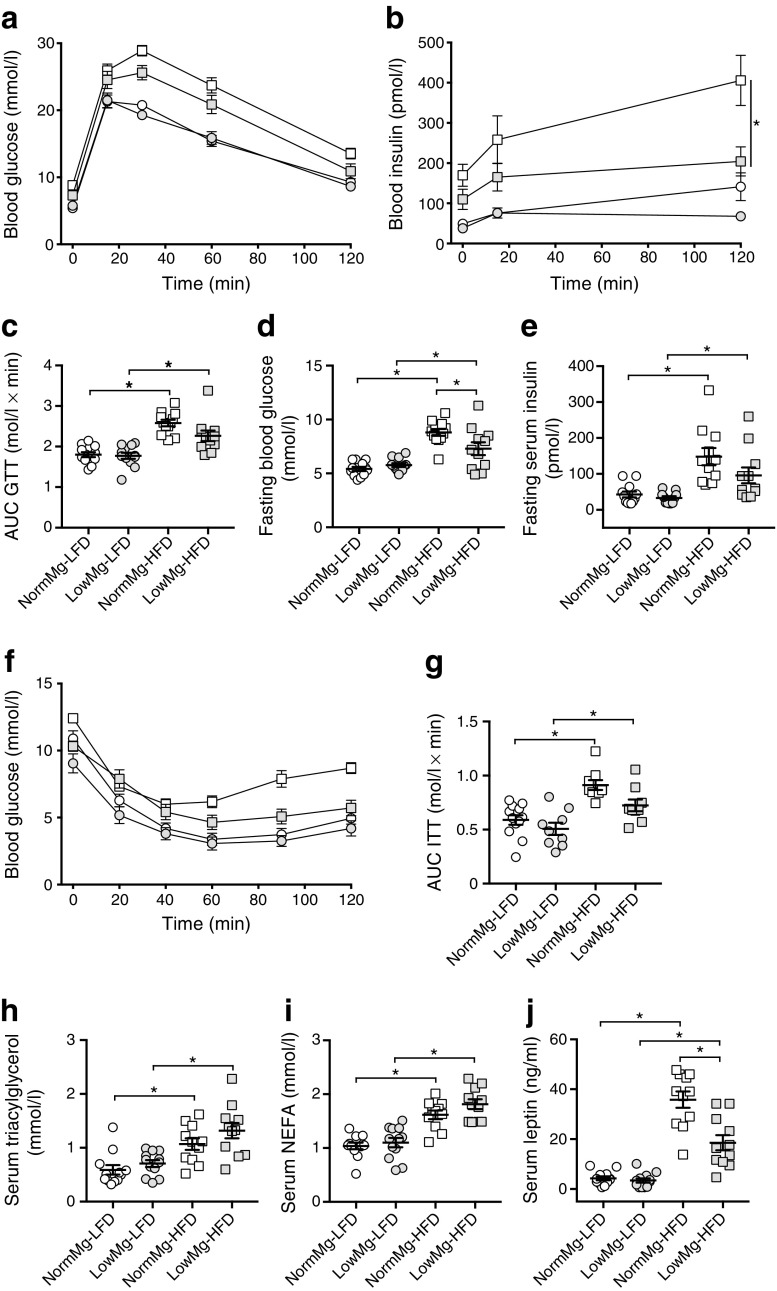Fig. 2.
Reduced diet-induced obesity in Mg2+-deficient mice is accompanied by high triacylglycerol levels and improved insulin sensitivity. (a) Glucose clearance determined by IPGTT at week 15. (b) Serum insulin measured at 0, 15 and 120 mins of the GTT. (c) AUC determined between 0 and 120 min. (d) Fasting blood glucose and (e) serum insulin measured during the GTT. (f) Blood glucose measured during an IPITT at week 14 (n = 9 mice per group, n = 12 for the NormMg-LFD. (g) AUC determined between 0 and 120 min (two-way ANOVA for dietary Mg2+ effect, p < 0.05). Non-fasted serum (h) triacylglycerol, (i) NEFA and (j) leptin concentrations at death (n = 12 mice for both LFD groups, n = 11 mice for both HFD groups). NormMg-LFD (white circles), LowMg-LFD (grey circles), NormMg-HFD (white squares), LowMg-HFD (grey squares). Data are mean ± SEM. Depending on the absence or presence of a significant interaction effect between dietary fat and Mg2+ content, either a two-way ANOVA (Tukey’s multiple comparison test) or an unpaired multiple t test (Holm–Sidak multiple comparison test) approach, respectively, was used to determine statistical significance. *p < 0.05 for the comparisons shown

